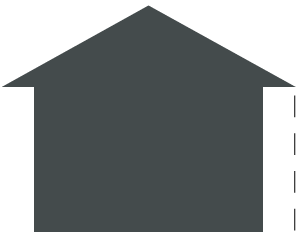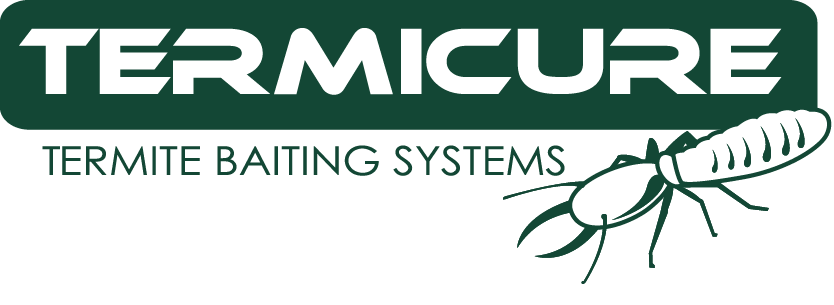0
You have 0 items in your cart
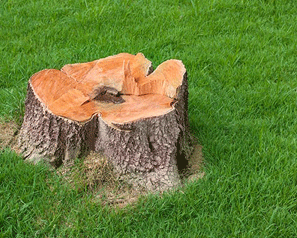
Most tree stumps will become a food source of an active termite colony, if not the main nest. Tree stumps contain all of the necessary elements of required to encourage a Termite Colony to thrive, so where possible, tree stumps should be removed.
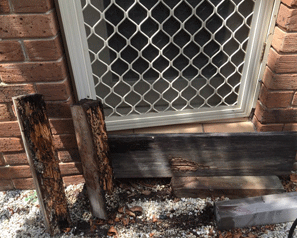
Stored building materials, timber debris and firewood are all highly palatable food sources for active termites, and are often the source of large numbers of termites within close proximity to the home. Timbers should be stored off the ground, and away from homes or structures which contain a food source for termites.
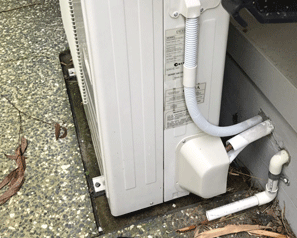
Air Conditioning units expel condensation as they remove heat from the air. As most air conditioning units are located right against the exterior of the building, condensation lines are usually close by. Redirection of the overflow lines to a drain or a downpipe is as extending the line with some conduit and pipe glue. A piece of garden hose and a ring clamp is also a simpler way to redirect the line.
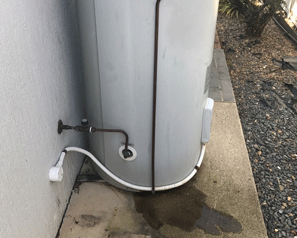
The electric hot water unit will expel excess water from the overflow line, as the internal pressure gets too high with the increase of water temperature. This water should not be allowed to expel against the building, as it creates ideal damp conditions for termite activity, right next to your home. An extension of the overflow line can be simply manufactures using a piece of garden hose and a ring clamp, to redirect the water away from the building, preferably to a drain or a downpipe.
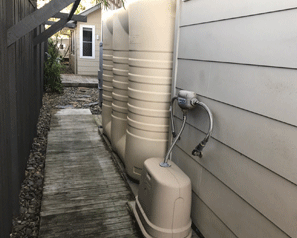
Many Rainwater tanks are set up immediately next to the home for convenience of limited plumbing requirements and the simple objective of saving space.
Unfortunately, this can cause a couple of major issues when it comes to termites.
Due to the design of many slimline water tanks, they create a large area where you are unable to get a visual on the exterior of the building, and the next issue is with the tank and plumbing leaks often associated with these slimline rainwater tanks.
If your water tanks are hard up against the building, it’s a good idea to take the opportunity to try and create about a 75mm gap between the tank and the wall. If you are able to empty the tank, and move it by hand to create the gap, at least you will be able to shine a torch in this area to detect any visual signs of termite entry. Obviously, if the there are any leaks with the plumbing or the tank itself, these should be fixed as soon as possible.
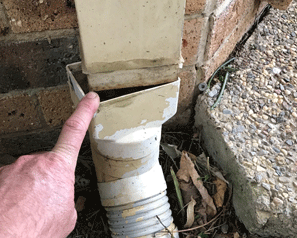
All plumbing leaks should be tended to. Even basic repairs to broken or separated downpipes can be done by the home handyman, and will limit the amount of moisture buildup against the property. More complex plumbing issues should be tended to by a professional plumber and drainer.
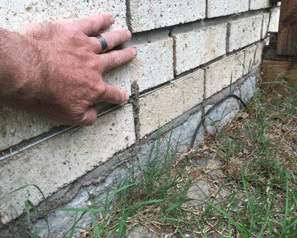
This is a big one. In most states, physical termite barriers are installed into new homes at time of construction, and homeowners are under the false sense of security that their home is protected from termites. Well this couldn’t be further from the truth.
Physical Termite Barriers such as Termimesh, Kordon, HomeGuard etc are only installed to make the presence of termite activity on the building VISIBLE. Termimesh for instance, is not designed to stop termites. It’s designed to force termites to the exterior of the building, before re entering the structure to where they can cause damage. Forcing termites to the exterior is simply to provide a visual indication that treatment is required.
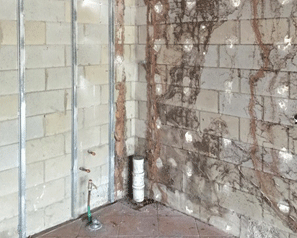
Correct. Termites won’t eat through concrete, however they will use a crack or a ‘cold join’ to enter a building and cause damage. A cold join is where two sections of concrete have been installed at different times, right against one another. This is common with renovations and extension work, where additional concrete is laid to increase the size of a building, or a patio has been converted into a living area. These areas are of particular concern as they are usually concealed by floor coverings or wall frame, and termites can be entering the building for some time before any damage is detected.

Not true. If you have a current Chemical Soil Treatment, a physical barrier, or even a managed termite monitoring system, an annual Termite Inspection is still required to ensure that there has been no breach of the installed system.
As a minimum, you should have your home inspected annually to ensure that there are no surprises. Annual inspections are required as a minimum of any warranty offered on the installed system at your property.
Not having your home inspected will void all warranties and leave you out of pocket in case of any claim.
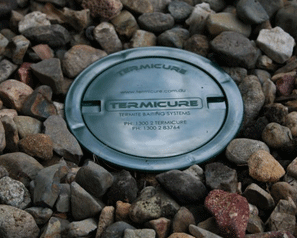
Whether it’s a Termite Baiting System, a Chemical soil treatment (termite barrier) or a reticulation system, which has been recommended by your Inspector, there will be advantages and disadvantages to each.
In terms of the best protection money can buy, it may be a combination of a Chemical soil treatment combined with an Always Active Termite Baiting System, but very few homeowners will take up the option of two professionally installed management systems at their home.
Chemical Soil treatments (chemical barriers) are an excellent method of providing ongoing protection for a structure for certain construction types. Termite Baiting Systems provide a form of management to help reduce the amount of active termite colonies within the vicinity of your home, hence reducing the risk of an attack.
Most termite management installations are influenced by cost, and building construction type.
Where a chemical barrier may not be suitable, it will almost always be suitable to have a termite baiting system installed. Contributing to this fact, termite baiting is usually a far less expensive outlay, and often provides outstanding results.
DIY Termite Baiting Systems such as the Termicure Termite Baiting System will provide further cost savings, and can be just as effective as having a professionally managed baiting system with the correct support.
To measure your property to see how many bait stations you need at your home, please follow these simple Guidelines.
Bait Stations should be installed at intervals no less than every 3 metres, external of the ‘drip line’ of your home.This means that if it were to rain, and you had no guttering to collect and disperse the runoff, the rainwater would fall on the drip line.
So start at one corner of the building, and count the metreage of the drip line perimeter. Then simply divide that figure by 3, and this will tell you how many stations you’ll require.
